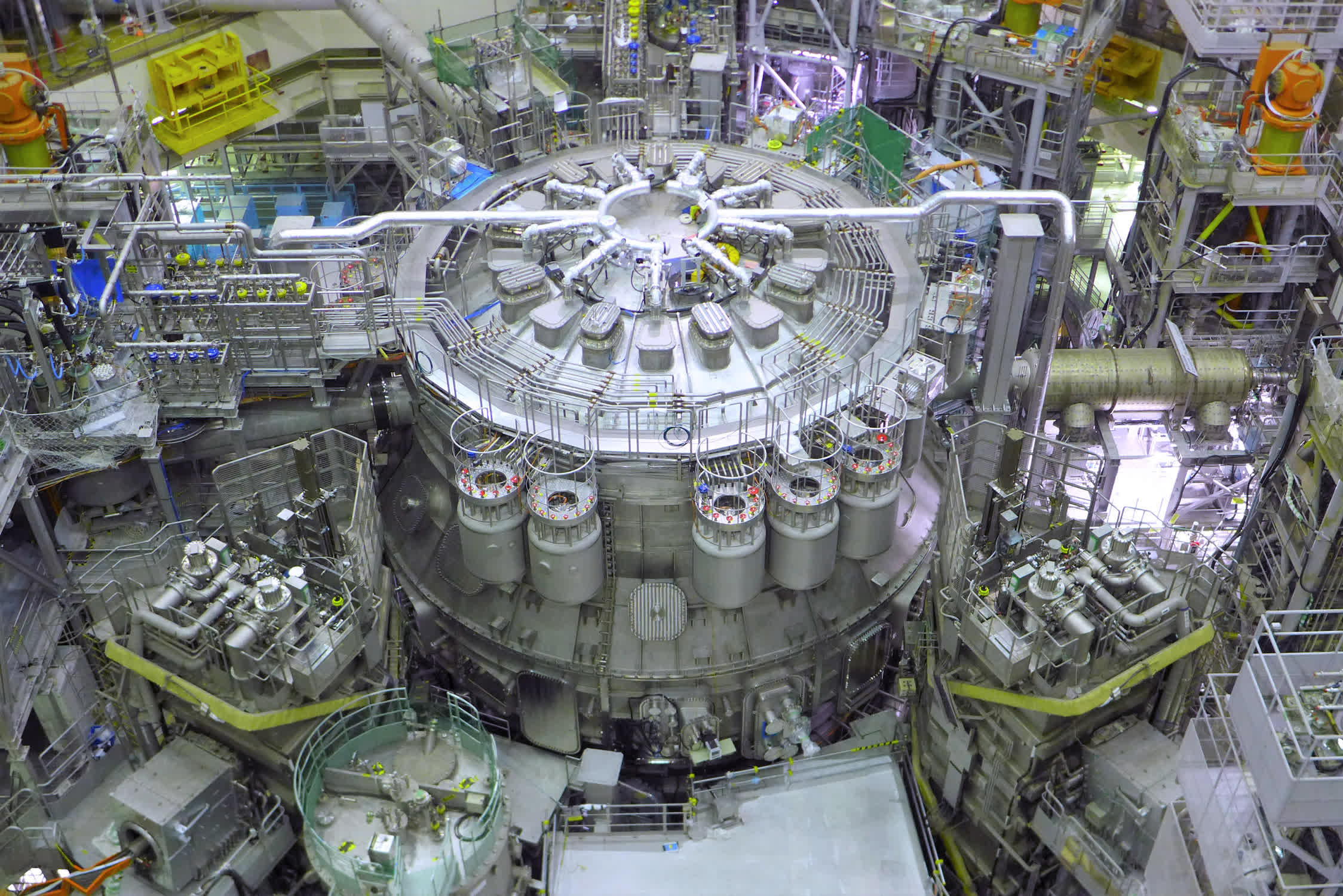Forward-looking: Fusion differs from fission, which is used in nuclear power plants, and it is based on the same principle that powers the Sun and stars as the hydrogen nuclei fuses into helium, releasing light and heat. Also, unlike nuclear power, fusion is intrinsically safe in that the reaction stops when the fuel supply or power source is shut down. Nor does it generate high-level long-lived radioactive waste.
The planet's journey to clean energy use has taken another leap forward in Naka, Japan, where the world's biggest and most advanced experimental nuclear fusion reactor has been inaugurated. Housed at the National Institute for Quantum and Radiological Science and Technology, the system, known as JT-60SA, is a six-story-high donut-shaped machine called a tokamak that contains magnetic field coils that confine plasma particles to allow the plasma to achieve the conditions necessary for fusion.
It is a significant development for fusion science – a technology that scientists and engineers have been experimenting with since the 1950s and that currently represents great hopes as a carbon-free source of energy.
"When it is realized, fusion would benefit every country and work alongside nuclear energy and other forms of sustainable energy, supporting climate change mitigation and contributing to the energy mix," said Matteo Barbarino, an IAEA Nuclear Plasma Fusion Specialist in a report published earlier this year by the International Atomic Energy Agency.
There are currently more than 50 tokamaks in the world, according to IAEA figures, and the U.S. Energy Department cites fusion energy scientists who believe that they are the leading plasma confinement concept for future fusion power plants.
The JT-60SA is a joint project between the European Union and Japan and is part of ITER, which stands for International Thermonuclear Experimental Reactor, an ambitious energy project where 35 nations are collaborating to build the world's largest tokamak.
The JT-60SA is meant to be a test bed for the ITER project and will use hydrogen and its isotope deuterium to conduct experiments on the stability of the plasma and its effect on energy production. The device, said Sam Davis, the deputy project leader for the JT-60SA, will "bring us closer to fusion energy".
